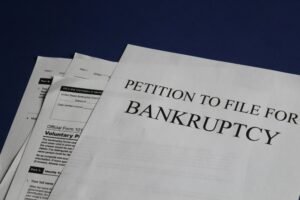CORPORATE INSOLVENCY IN THE UK – ROUTES AVAILABLE
Chairmen overseeing a turnaround need to actively consider the corporate insolvency routes available in the UK. It’s essential to acknowledge that chairmen are fallible, and there might be situations where repairing the damage proves impossible. Maintaining awareness of insolvency options is imperative.
In the United Kingdom, the Insolvency Act 1986 actively establishes the legal framework for addressing financial distress or insolvency in both individuals and businesses. This comprehensive legislation actively encompasses various aspects of insolvency law. This includes bankruptcy, individual voluntary arrangements (IVAs), and company insolvency.

The Insolvency Act outlines the procedures for initiating and administering corporate insolvency proceedings. These active procedures involve appointing insolvency practitioners, liquidating assets, distributing proceeds, and discharging debts. The Act also actively delineates the rights and obligations of creditors, debtors, and insolvency practitioners throughout the insolvency process.
Since its enactment, the Insolvency Act 1986 has actively undergone multiple amendments, with the Enterprise Act 2002 and the Insolvency (England and Wales) Rules 2016 introducing significant changes. These amendments actively aim to modernise and streamline the corporate insolvency process, introducing new procedures for rescuing insolvent companies and enhancing the powers and responsibilities of insolvency practitioners.
Main types of corporate insolvency in the UK
Liquidation
Liquidation involves actively selling a company’s assets to settle its debts. There are two types of liquidation:
- Directors initiate Creditors’ Voluntary Liquidation (CVL) when they deem the company insolvent and incapable of continuing operations. Subsequently, creditors appoint an insolvency practitioner to oversee the liquidation process.
- Compulsory liquidation begins when a creditor or a group of creditors petitions the court to wind up the company due to its inability to meet financial obligations.
Administration
Administration entails appointing an insolvency practitioner to assume control of the company and strive to prevent liquidation. The goal is to restructure the company’s operations and finances for viability. Two types of administration exist:
- Company Voluntary Arrangement (CVA) is initiated by the company’s directors, involving negotiating a repayment plan with creditors.
- An Administration Order, initiated by the court or a secured creditor, results in the appointment of an administrator to manage the company’s affairs.
Receivership
In the UK, receivership represents a specific insolvency procedure typically applied when a company defaults on a secured loan or other debt. The creditor holding the security, such as a mortgage, appoints a receiver whose responsibility is to seize control of the company’s assets and facilitate their sale to repay the debt.
Receivership, in contrast to liquidation or administration, is a focused insolvency form, involving only the assets covered by the security. Consequently, the receiver lacks the authority to sell the entire business, potentially leaving other creditors with unpaid debts.
The terms of the security agreement between the company and the creditor dictate the receivership procedure. The creditor can appoint a receiver without court involvement, although the receiver must notify the company and other concerned parties.
Upon appointment, the receiver assumes control of the secured assets and possesses the authority to sell them to settle the debt owed to the creditor. Acting in the best interests of all creditors, not solely the appointing creditor, the receiver must furnish regular reports on their activities to both the court and the creditors.
Further information about insolvency:
Advice from insolvency experts